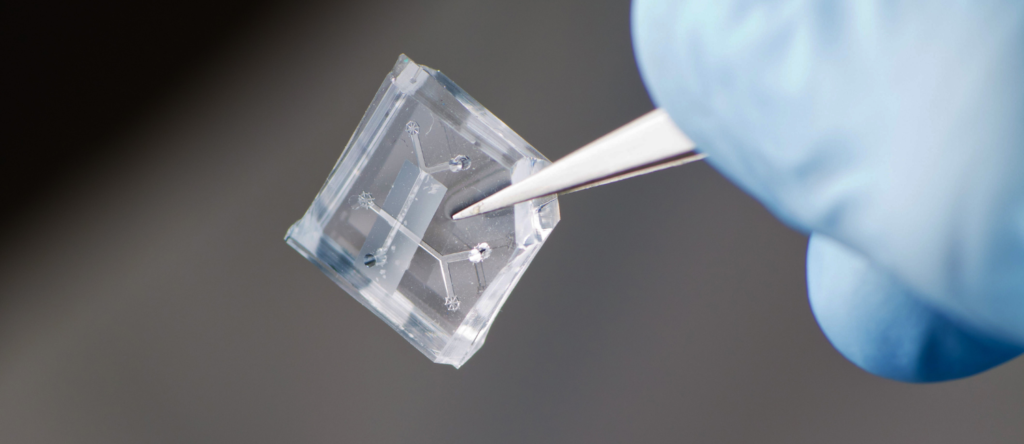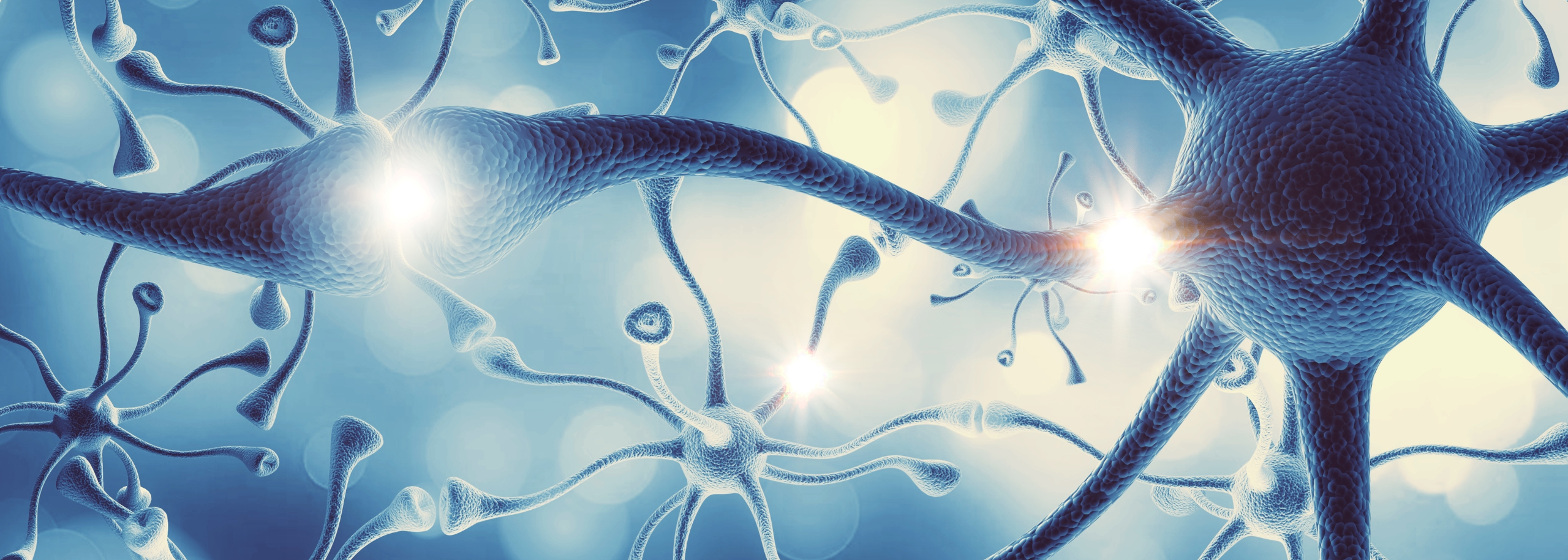Our brains are perhaps the most complex organ in our body. Research into brain disorders is therefore often done on laboratory animals; but animal tests often have limited predictive results. The result: unnecessary suffering for both animals and humans.
A team of researchers from Maastricht UMC has therefore come up with a new concept: the brain biopsy-on-a-chip. This new animal-free model is already a great success. Brain tissue from epilepsy patients remained active for 6 days on this innovative chip!
This is how the model works
The brain biopsy-on-a-chip consists of a circuit board with electrodes and a layer of nerve cells that are grown from stem cells. A piece of surgically removed brain tissue (from a patient) is then placed on these nerve cells. The cells in the brain tissue communicate with the nerve cells, which in turn transmit this activity to the electrodes on the circuit board. This way, the chip measures the activity of the brain cells.

An example of an organ-on-a-chip
Breakthrough for epilepsy patients
For the first time ever, scientists have succeeded in preserving brain activity outside of the body for several days. Dr Govert Hoogland of Maastricht UMC+ leads the group of researchers developing the chip and says: “New experiments will have to show whether this is a useful model, but our approach potentially provides a clinically relevant alternative for non-animal brain research of epilepsy, for example. It thus opens the way to evaluate new, personalised treatments.”
At the moment, testing is still in full swing, but if the model proves useful, it will make a big change for research without the use of laboratory animals. The brain biopsy-on-a-chip also offers hope and perspective for patients with epilepsy and other brain disorders, as it could help develop better treatments based on their own brain tissue.
Hope for lab animals and science worldwide
The breakthrough of brain biopsy-on-a-chip is a promising development that is changing the future of animal-free research and treatments for brain disorders. Successfully preserving living brain tissue outside of the body on an innovative chip opens the door to new possibilities for understanding complex brain disorders and developing personalised treatments. This groundbreaking method offers hope for science patients worldwide. It shows that we are taking steps towards a future where laboratory animals are no longer needed and where we can provide effective, ethical and tailored solutions to treat brain disorders.
Rising demand for non-animal alternatives
The pressure from society on reducing animal testing is ever-increasing. More and more people are critical of the usefulness and necessity of animal testing. Especially given the limited predictive value for application to humans, this is a legitimate question. Above all, of course, ethical questions such as ‘does animal discomfort outweigh scientific interest?’ play a role. Alternatives like this brain biopsy-on-a-chip therefore make an important contribution to replacing laboratory animals and improving biomedical research.

